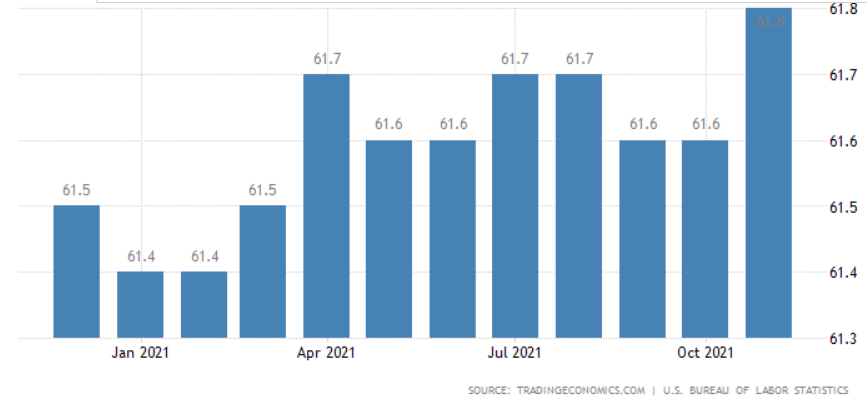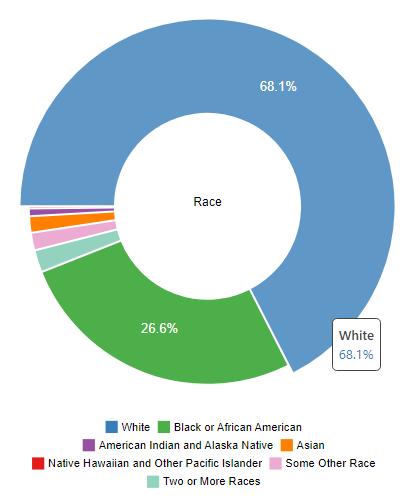Labor Market in Alabama
Alabama is a state in the U.S. located in the southeastern region of the country. The state’s capital is Montgomery, one of the nation’s economic hubs. Moreover, Alabama’s demographics consist of about seventy percent Whites and about twenty-seven percent African Americans (“QuickFacts; Alabama” 1). The state, therefore, features mixed labor forces aspects characteristic of the two leading races. Like several other states in America, Alabama has had an appealing labor market for several years before the oncoming of the current pandemic. The present work, thus, covers the state’s trends in the labor market and other related facets.
Overview of Labor Market
A look at Alabama’s key labor information presents the state as one of the most affected regions in the country by the current pandemic. Factors like unemployment rate, median income, and labor force participation rate (LFPR) show Alabama’s urgent need for effective intervention. The unemployment rate in Alabama, as of October 2021, stood at a significantly lower rate of 3.1 percent (“Gross Domestic Product (GDP)” 1). The lower numeral shows that a majority of the persons seeking employment opportunities in the country readily have access to jobs. The rate is one of the lowest in entire America. Additionally, Alabama’s median income is significantly lower than the national average. The state’s median income as of 2020 was $46,086, while that of the entire U.S. was $55,832 during the same time (“Gross Domestic Product (GDP)” 1). This implies a reduced financial availability and a significantly lower purchasing power among the Alabamians.
The lower unemployment rate in Alabama almost hides a crucial aspect of the state. However, a look at the region’s low LFPR makes everything clear. At about fifty percent LFPR, Alabama is one of the American states with the least labor supply (“GDP and Personal Income” 1). The LFPR percentage shows that a majority of the unemployed individuals in the states are not looking for jobs. The aspect leaves roughly 2.1 job openings for each individual looking for a job in Alabama (“GDP and Personal Income” 1). Furthermore, America’s national LFPR is about sixty-two percent as of 2021, which is still better than that of Alabama, as shown by figure 1 below. With an unemployment rate of 13.5, 69.5% LFPR, and $58,275 median household income, the state of South Dakota seems to have a stronger labor force (“GDP and Personal Income” 1). The situation, thus, implies a quicker economic recovery in South Dakota relative to that of Alabama. The key labor force elements of the state of South Dakota also prove the state to be reviving at a faster rate than the whole of the U.S. The variations come from the different socioeconomic policies adopted by the two states.

Additionally, the state of Alabama features a generally low cost of living, which ties to the relatively low median income. The condition explains the state’s affordable cost of living, 82.3, relative to the entire U.S. at 100. Alabama also features a substantially high percentage of self-employed individuals relative to the entire U.S. (“Unemployment Rate in Alabama” 1). The aspect arises from many people’s move to join the services industry, mainly retailing, agriculture, daycare, mining, and transport. As such, the state of Alabama’s self-employment rate seems to rise at a time when the general trend in the U.S. indicates a decline in the same facet over several years. Demographically, 68.09 percent of Alabama’s population comprises Whites, 26.4 percent Blacks, 1.36 percent Asians, 0.52 percent Aboriginals, and 0.05 percent Pacific Islanders, as indicated by figure 2 (“QuickFacts, Alabama” 1). The demographic statistics show Whites and Blacks as the two leading races in the state. Lastly, Alabama State’s employment rate, as of September 2021, stood at 2,139.2, marking substantial growth from the start of 2021.

Trends
The state of Alabama exhibited a significantly stable economy before the oncoming of COVID-19. The states fared significantly well amongst several other regions in the country. However, the point that Alabama’s population has a substantially large number of minorities exposes the state to several issues characteristic of the same. The reported low unemployment rate in the state does not, for example, apply across all the races in Alabama equally. The problem is more pronounced among the minority Blacks than the wealthy Whites (“Unemployment Rate in Alabama” 1). The matter has existed for years, with 2020 and 2021 being the worst years since 2011 due to the present-day COVID-19 pandemic.
Similar to the current socioeconomic challenges experienced in Alabama, the state equally suffered severe industry breakdown during the 2007-2008 economic crisis. The issue, thus, shows that the state’s weak socioeconomic policies are to blame for the plights affecting the state’s citizens. Better still, the 2010 population census shows Alabama’s population to have grown by about eight percent since 2000 (“QuickFacts; Alabama” 1). The aspect, thus, indicates the state’s potential to grow socioeconomically through the adoption of the appropriate policies and strategies. However, Alabama’s population growth over the period was still below that of the U.S., which stood at about twelve percent, showing that the state’s socioeconomic performance generally falls behind those of America.
Impacts of COVID
The state of Alabama reported its first COVID-19 case in March 2020, about four months after the pandemic’s occurrence in China, in November 2019. As of May 2021, the state reports having experienced about half a million COVID-19 cases and relatively ten thousand confirmed deaths (“Coronavirus Disease 2019” 1). Throughout the COVID-19 pandemic duration, the state of Alabama stands among several other states in the U.S. that have never imposed a total economic lockdown in response to the pandemic. However, the state-operated a twenty-four hours curfew between March 24th and April 3rd, 2020, in Birmingham, as a response to the pandemic. Schools and public gatherings were banned in the state from March 12th before reopening in February 2021. Measures to curb COVID-19 in the state, including the need to avoid public gatherings, also forced investors and employees to shut down their businesses. The outcome of such developments has been a long stay at the home of both adults and children, with many persons adopting different tactics to survive.
The state of Alabama also suffered a major economic loss due to the COVID-19 pandemic. COVID-19, for example, reduced the state’s earnings from about thirteen billion dollars a year to about five billion (“U.S. Bureau of Economic Analysis” 1). Nonetheless, the state receives complements due to its ability to promote earnings from the tourism industry at a time when several other states in the U.S. struggled to earn from the same sector. Alabama’s attractive beaches also played a major role in ensuring the smooth flow of tourists (“Alabama’s Travel Industry” 1). Currently, Alabama faces one of the least unemployment rates in the U.S. due to several issues, including fear among citizens not to conduct the virus through job-related interactions. The self-employment sector in the state also grows significantly due to the COVID-19 effects in the state, while the administration is forced to enact new policies to curb the adverse effects of COVID-19.
Labor Market Policy
The low labor participation in Alabama says a lot concerning the state’s labor policies. Several critical policy constraints require quick fixing for the state to realize better records (“Regional Data” 1). To begin with, Alabama’s insufficient unemployment benefits are blamed for the present issue regarding reduced labor participation among the state’s citizens. The state’s administration deliberately reduced its amount of unemployment insurance by the mid of 2021 to force citizens to seek employment (“Economy at a Glance; Alabama” 1). However, the move was significantly wrong based on its effects on the state’s economy.
However, the aspect made the situation even worse in that it deprived many people of their ability to afford transportation finances to go to work. Alabama’s lack of effective policies on public transportation also makes it hard for many people to go to work because many existing buses and taxes drop the workers far from their working venues. Notwithstanding, the state’s inability to promote COVID-19 vaccination initiatives leaves many people unvaccinated, thus being afraid to work (“Data and Surveillance” 1). All these issues, coupled with the unpaid leaves in the state, high taxation, and increased education expenses, cause substantial barriers to employment that many Alabamians find hard to overcome.
State Labor Market Outlook
The state of Alabama stands to wait longer before realizing full recovery from the present economic hardship. The region’s poor labor policies and the fact its citizens already exhibit tactics to survive in the low-mode economy prove this. Many Alabamians are not employed and are never seeking employment. The problem mainly arises from several factors, including the fear of conducting COVID-19 at workplaces, the existence of ineffective anti-COVID-19 strategies, and the lowering of unemployment insurance support by the government. It can be recommended that the Alabama State leadership increases its unemployment insurance funds to empower people to travel to work. Moreover, the state needs to facilitate the COVID-19 vaccination process to give more people the confidence to leave their houses for work. Introducing paid leaves and job insurance in the service sector is also necessary for the Alabamians to take up the available job offers.
Works Cited
“Alabama’s Travel Industry Survived Pandemic Better than 45 Other States.” Sweet Home Alabama, Web.
“Coronavirus Disease 2019 (COVID-19).” Alabama Public Health, Web.
“Data and Surveillance.” Alabama Public Health.
“Economy at a Glance; Alabama.” U.S. Bureau of Labor Statistics.
“GDP and Personal Income.” Bureau of Economic Analysis, Web.
“Gross Domestic Product (GDP) Summary, Quarterly by State.” Bureau of Economic Analysis, Web.
“QuickFacts; Alabama.” United States Census Bureau.
“Regional Data.” Bureau of Economic Analysis.
“U.S. Bureau of Economic Analysis. GDP and Personal Income.” Bureau of Economic Analysis, Web.
“Unemployment Rate in Alabama.” FRED Economic Data, Web.